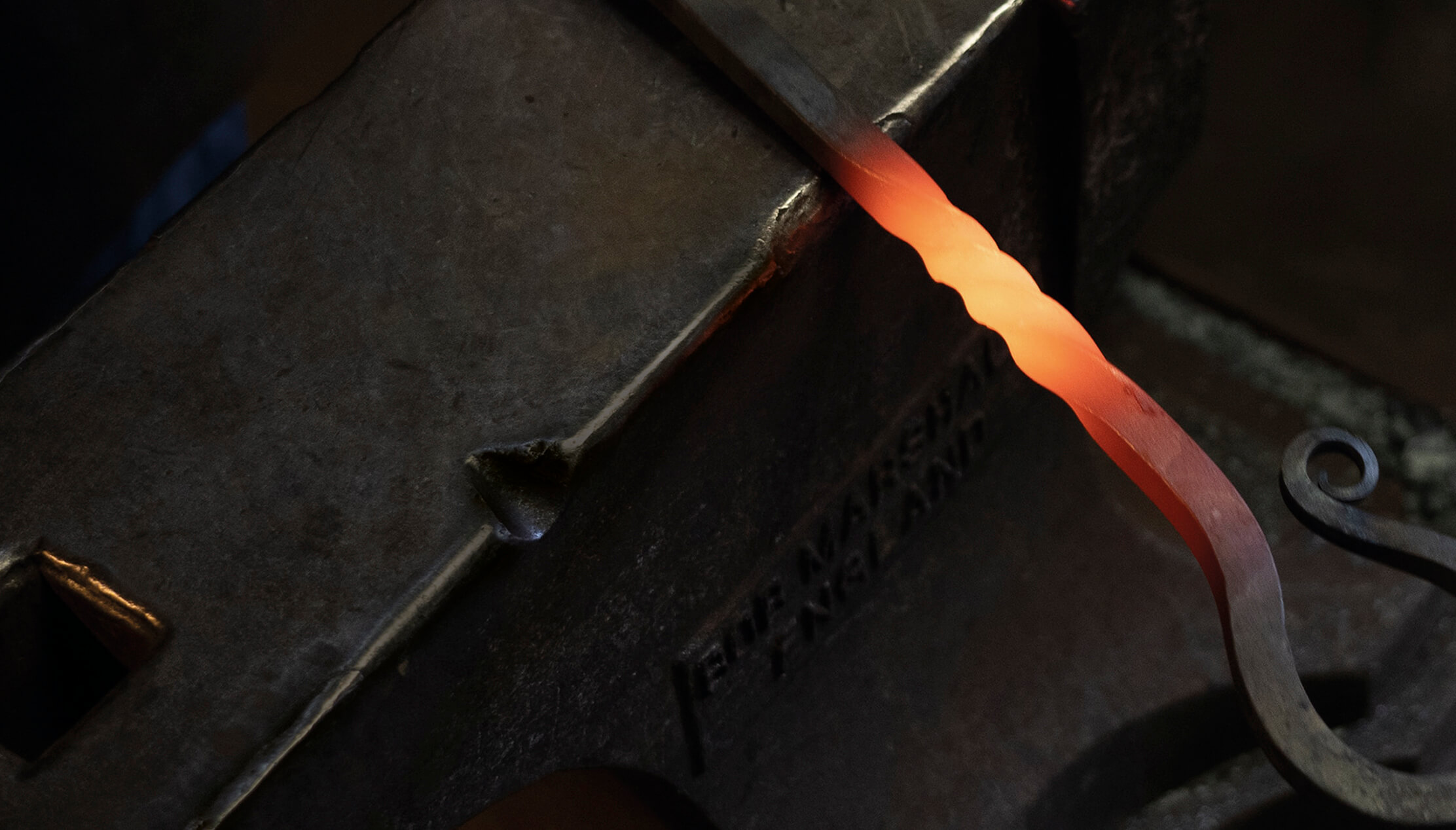Blacksmiths in Burpham
Moira MacQuaide’s history of Burpham
From shoeing horses to creating art works.
A blacksmith is someone who works with metals, creating objects such as agricultural tools, gates, furniture, decorative and religious items, etc, as well as shoeing horses’ hooves. Although it is very likely that there was one in the area many years before, the earliest record found for a blacksmith in Burpham was for George Heath, who was apprenticed to learn his trade in 1743. By the time he died in 1793 he was both Burpham blacksmith and Innkeeper at the Anchor and Horseshoes pub. The Heath family continued with the smithing business for several generations, two Georges, two James and Samuel, who was the last until he emigrated to Canada in 1855. The business was taken over by Charles Puttock, whose son and grandson, along with a nephew Henry Edmead, continued in the forge on London Road until about 1911. Charles died in 1937 after being struck by a plane that crashed in Stoke Park.
According to the Tithe Maps of 1838, the blacksmith lived in Rose Cottage, on London Road, with his forge next door – later to become Guildford Signs. There seems to be some evidence that there had been a forge next to the Anchor and Horseshoes pub in previous years, but no written records survive to prove this. In 1905 Lord Onslow sold the property consisting of seven rooms, a garden and pigsty, as well as the farrier’s shop, stabling for two horses, a chaise house and woodland attached.


… the earliest record found for a blacksmith in Burpham was for George Heath, who was apprenticed to learn his trade in 1743…
Since 1911 there has been no blacksmith in Burpham, as the world changed and motor cars replaced horse drawn carriages. However, in recent years there have been several examples of modern blacksmiths creating signs and artistic structures instead. There is the sign above the entrance to Sutherland Memorial Park, but it’s not known when this appeared.
In 1991 the new village sign was erected, following a competition for ideas – won by Don Scott’s photo of St Luke’s Church. Although the first shops on London Road opened in the 1930s, it was only in 2012 that the signs, designed by Nick Bates of Burrows Lea Forge in Shere, were placed in front of the London Road and Kingpost Parade shops. In 2015, when Aldi opened their shop, the sculpture of the Green Man was placed on the wall, to remember the history of the site – this was also created by Nick Bates.
In 2017 the Nine Standing Leaf sculpture, also known as the Sutherland Circle, was created in Sutherland Memorial Park, designed by Steve Tomlinson, with ideas from children at Burpham Primary School.


If you are willing to share your memories and/or photos to tell us more about Burpham then please contact Moira MacQuaide, either by e-mail (moira.macquaide@gmail.com) or by phone or text (07963 756543). My book, Burpham – A Gateway to Guildford is still available from me for £10 (free delivery locally) or on Amazon, but the History of Burpham Primary School 1908-2014 is now out of print (available to borrow at Guildford Library).


